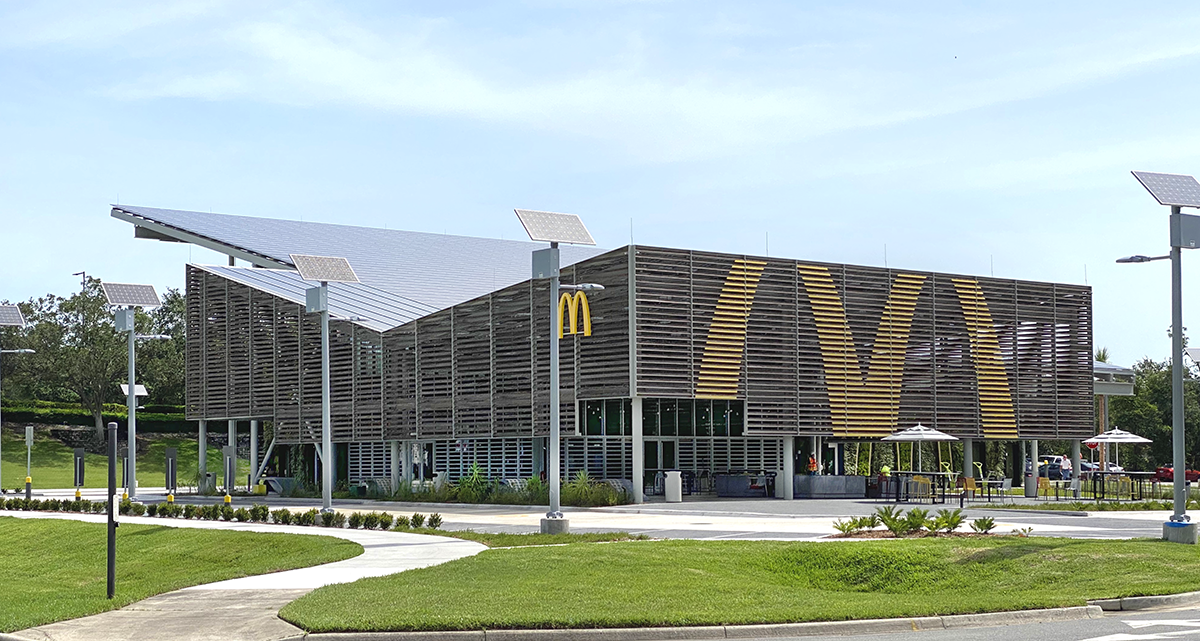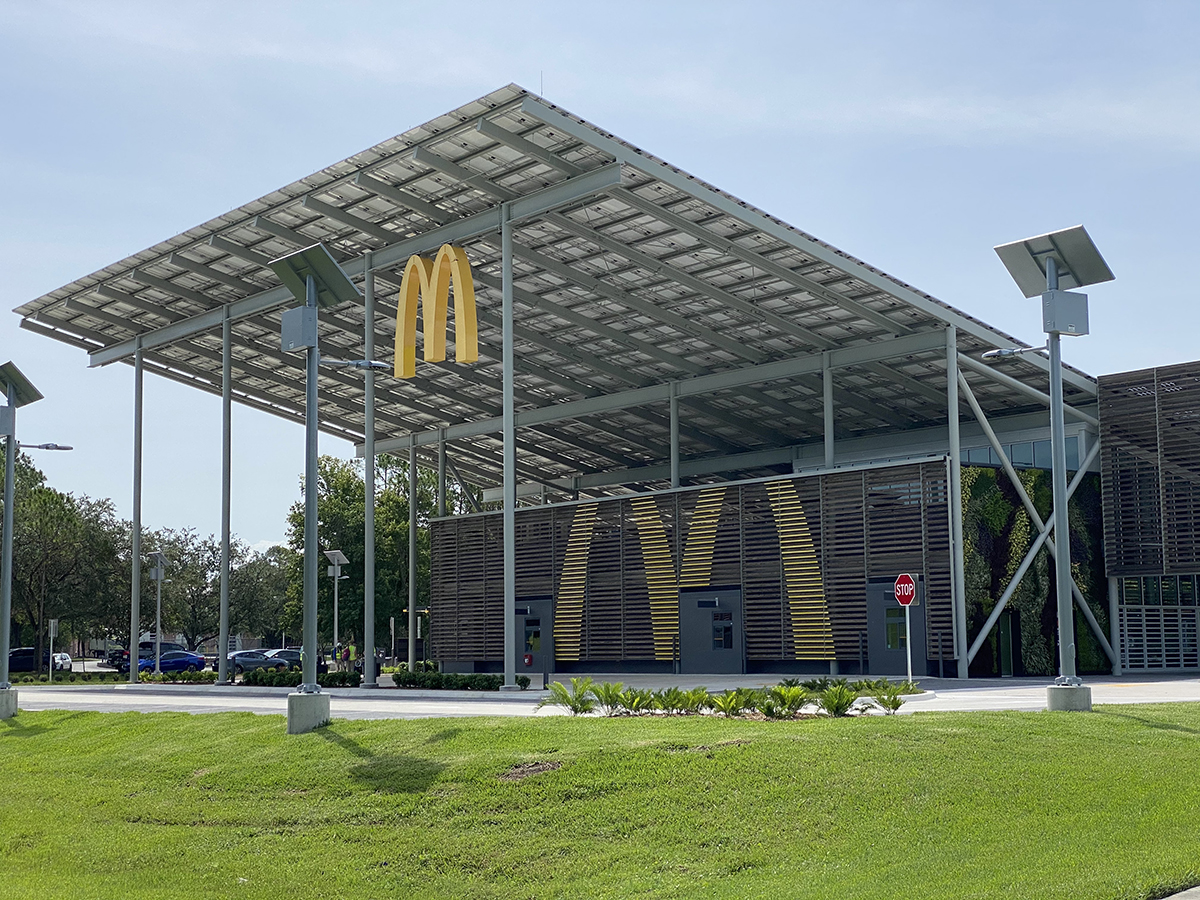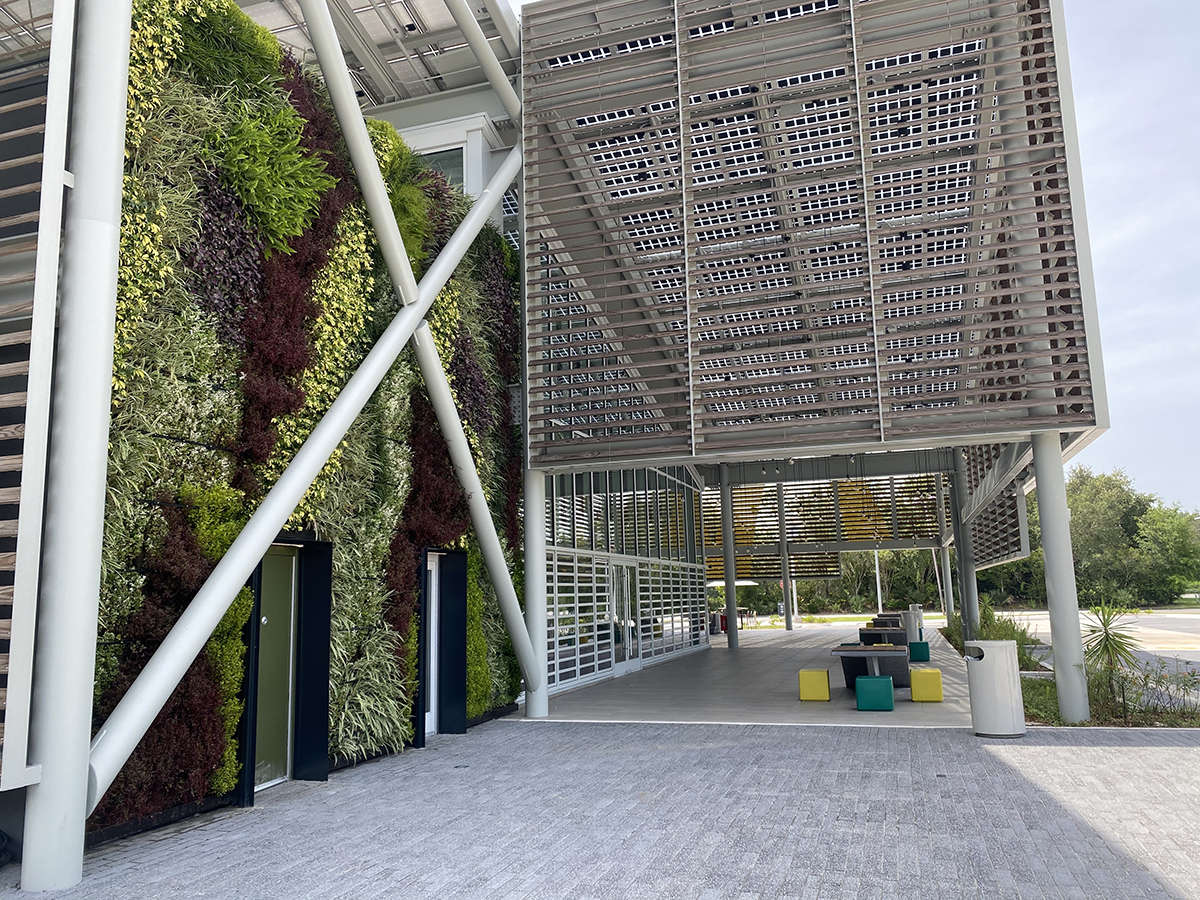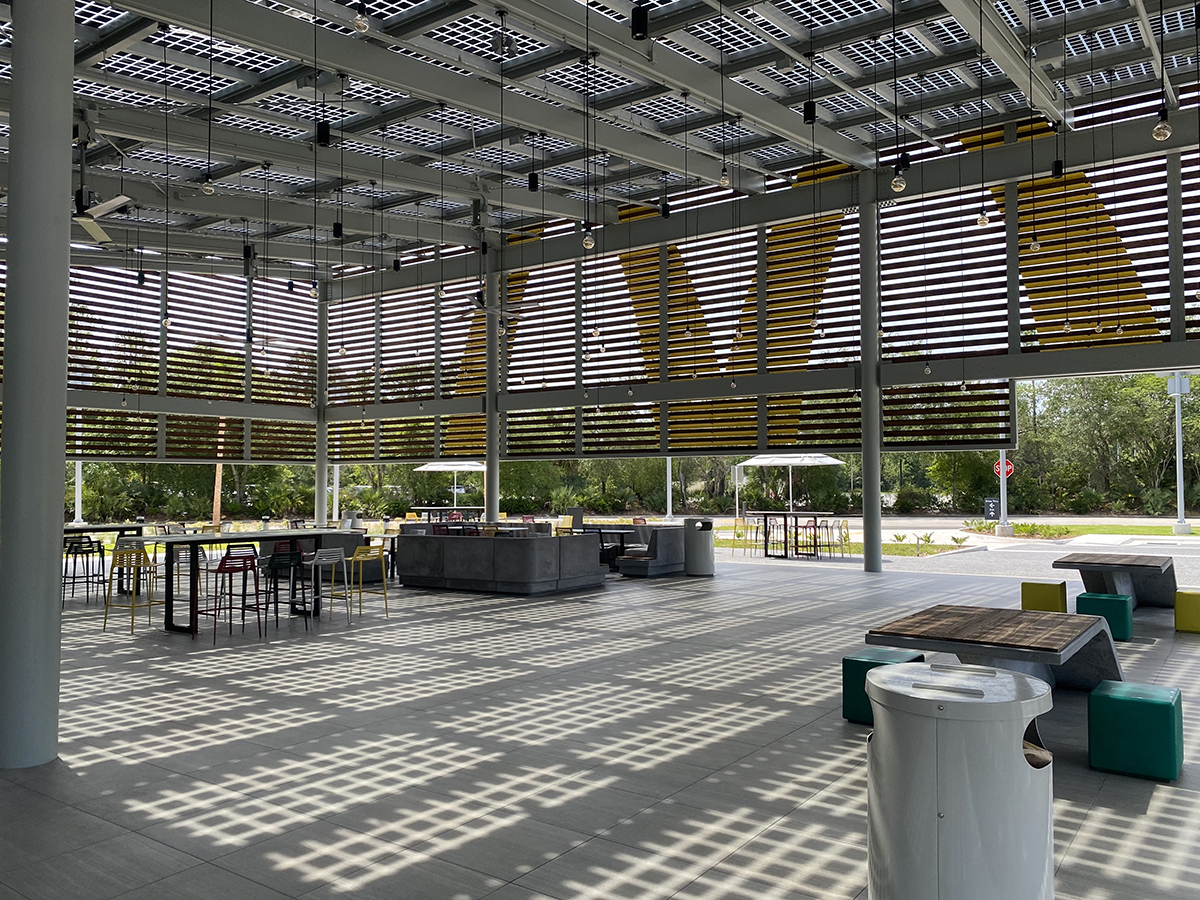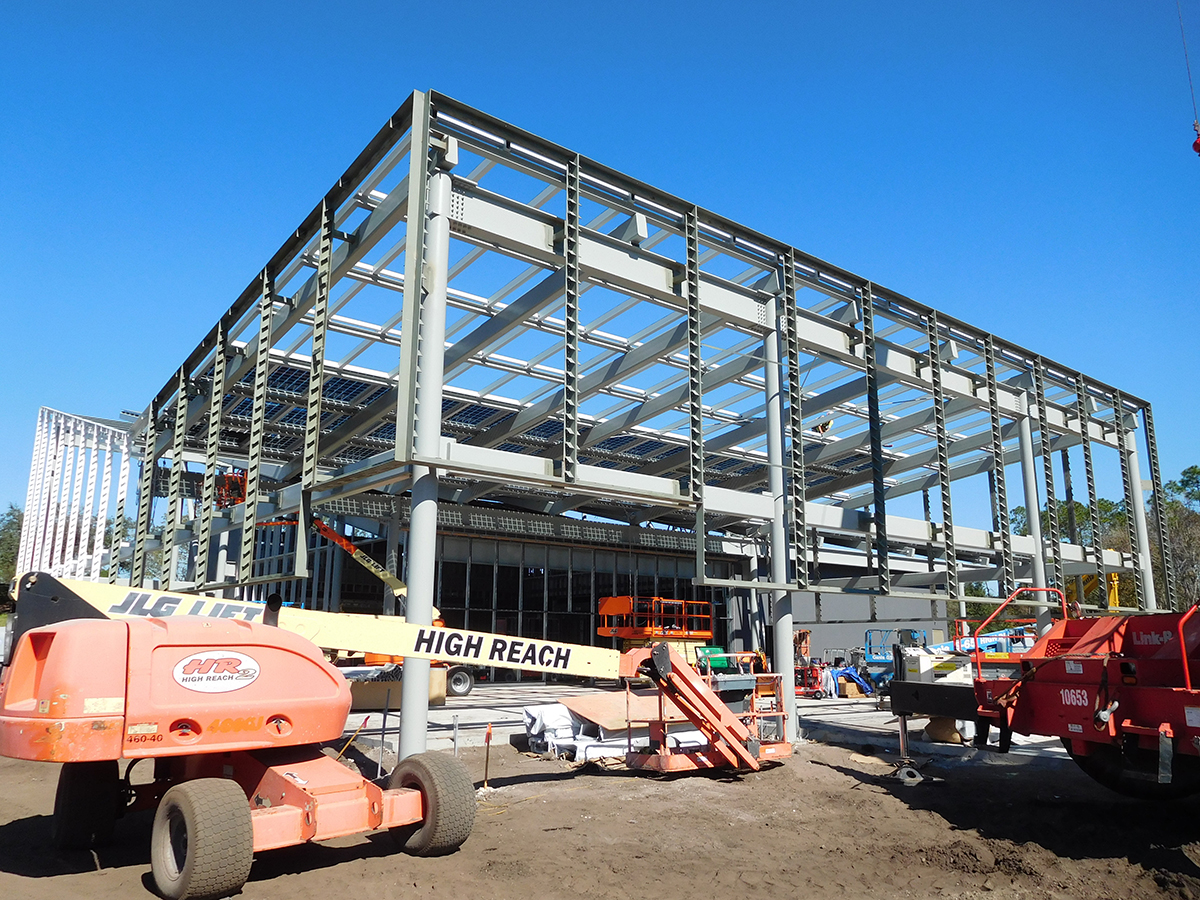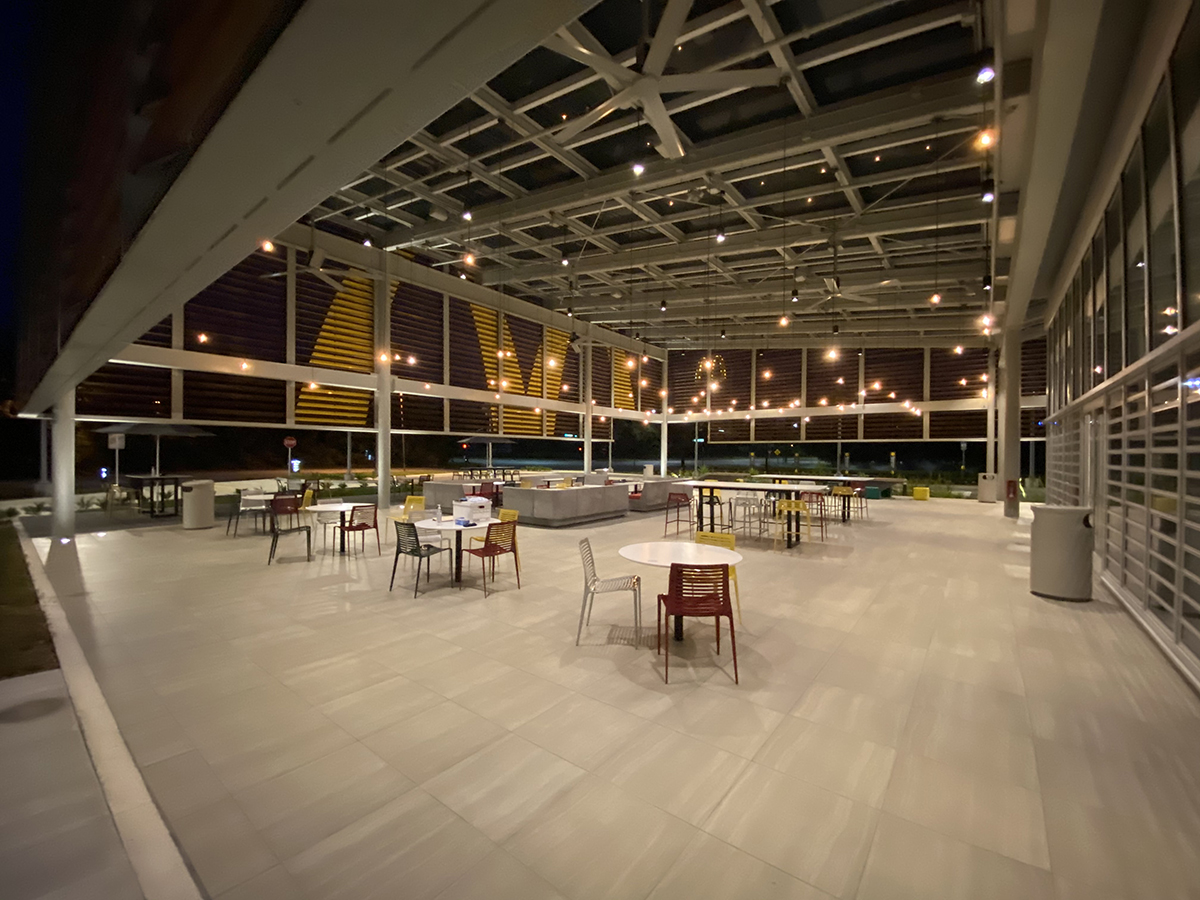AISC
McDonald’s Net-Zero Quick-Service Restaurant Rebuild
Merit Award - Less than $15 Million
The keyword for this project is ‘sustainability.’ To see a major corporation push to construct a net-zero restaurant is reaffirming the importance of the environment. And to have structural steel play such a big role in this movement is fantastic. It allows the world to start viewing steel as the sustainable material it is and encourages them to pursue future projects with this material that can be both sustainable and beautifully unique. —2021 IDEAS² Judge Maysa Kantner, Atlanta Structural Steel Specialist, AISC
McDonald’s is serving up a flagship Quick-Service Restaurant in Kissimmee, Fla.
The project, a rebuild/remodel of an existing facility, will create one of the world’s first net-zero fast-food restaurants. The 8,000-sq.-ft facility incorporates key strategies for sustainable design, such as solar panels, living walls, natural shading elements, solar lighting, innovative heat reduction techniques, and structural steel framing. Steel was chosen not only to create an efficient structural frame to support the weight of the solar panels and wind forces in Florida, but also to enhance the architectural features that the owner was looking for.
The design intent was to provide a facility in which all the heavy structural elements support the project’s net-zero goal without compromising aesthetics. As part of this goal, the steel-framed building was designed to blend in with the surrounding natural environment. The living walls were attached to the steel frame in a manner that would soften the appearance of the facility as well as add a more natural aesthetic to the architecture. In addition, the design allows the wood louvers and photovoltaic cells to be integrated into the glazing of the building.
The location of this project, on Disney’s property near Orlando, demanded a landmark type of structure that could hold its own with the countless eye-catching theme-park structures in the area. Structural steel was the perfect material for these conditions because of the endless possibilities in shapes and configurations that could be achieved by using structural hollow structural sections (HSS) and wide-flange members.
The project came with several early challenges, such as attaching the solar panels to the roof, lateral drift due to wind forces, and building the 35-ft cantilever for the roof. But the most significant challenge was building this impressive structure within an existing building that was partially demolished. The team used steel brackets welded to the wide-flange beams to support the solar panels and all electrical wiring. It also designed two braced frames with round HSS to control lateral drift and used moment connections with plates and bolts for the long-span cantilever beams.
Using steel framing facilitated longer spans without multiple support columns, allowing the interior and exterior to capture an open-air feel as well as allow for more light capture within the facility. This was important as it was a critical aspect of lowering power consumption by reducing the need for artificial lighting.
The structure was designed to efficiently transfer all lateral and gravity loading in a direct load path from the roof diaphragm supporting the solar panels to the braced and unbraced steel frames. The combination of lateral and gravity loads, transferred through the braces and columns to foundations, generated high-magnitude reactions at the ground supports, which consist of 36-diameter cast-in-place caissons.
The critical path of the construction schedule required materials to be delivered to the site as soon as initial foundations were ready for erection. All critical structural elements arrived on-site fabricated, painted, and ready for immediate installation. It was important for the steel infrastructure to appear minimal to emphasize the louvered wood cladding of the exterior walls as well as the outdoor canopy, which is covered with transparent photovoltaic solar panels.
The overall structural steel system supports 1,066 solar panels spanning more than 18,000 sq. ft of roof space, 800 sq. ft of solar glass panels covering the outdoor seating area, and 600 sq. ft of louver windows that push the heat out and keep the cool air in.
Using steel supported every major building element and aesthetic desire, resulting in a sustainable structure that will educate and be admired long into the future.
P&A Welding and Machine, Inc., Mulberry, Fla. *AISC Member*
NCF CIM Fabrication, Mulberry, Fla. *AISC Member*
Structural engineer: CPH, Inc., Sanford, Fla.
Architects:
CPH, Inc., Sanford, Fla.
Ross Barney Architects, Chicago
General contractor: Southland Construction, Inc., Apopka, Fla.
Owner: McDonald’s Corporation, Chicago
- Project Category: Year 2021
- Location: Kissimmee, FL
- Award Category: Merit Award - Less than $15 million
- Year Completed: 2020
- Submitting Firm: CPH, Inc.
- Photo Credit: 1, 2, 3, 4, 6 - Tyler Carr, Southland Construction; 5 - CPH, Inc.

